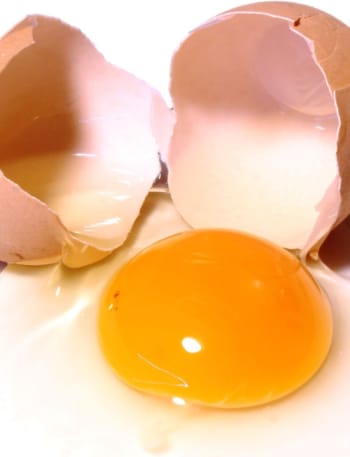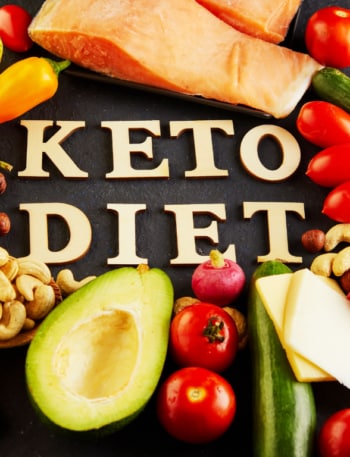If you’re cooking a recipe at home that needs raw eggs, it’s a good idea to pasteurize your eggs to make them safer to consume and cut down on the risk of getting sick.
There are numerous great ways to use raw whole eggs, yolks, and whites in cooking, such as making your own mayonnaise, Caesar dressing, chocolate mousses, and meringue. However, there are also health risks linked to consuming raw eggs, including the chance of coming into contact with Salmonella, which can lead to symptoms like stomach cramps, vomiting, diarrhea, fever, and, in very rare instances, even death.

So, if you’re cooking for people who are really at risk or have weak immune systems, always go for pasteurized eggs when you need raw ones.
An alternative to using raw eggs is to opt for pasteurized ones. Similar to other products like milk, pasteurizing eggs involves heating them to a temperature that kills harmful bacteria without fully cooking them.
Find out how pasteurize your eggs safely at home!

Related articles:
Is It Safe to Consume Raw Eggs?
Raw Vs. Pasteurized Milk: Risks and Benefits
How to Pasteurize Milk at Home?
What are pasteurized eggs?
A pasteurized egg is one that has undergone heating to eliminate any bacteria that might lead to a foodborne disease, like food poisoning. Raw eggs may contain salmonella bacteria. However, the pasteurization method destroys these bacteria without cooking the egg itself.
Why should I pasteurize eggs?
The CDC advises that pregnant women, individuals aged 65 and older, newborns, young children, and those with weakened immune systems should steer clear of consuming raw (or not fully cooked) eggs.
What about eggs from local farms? Aren’t they naturally shielded from bacteria as long as they’re still in their shells?
Unfortunately, that’s not the case. Salmonella can be present on the eggshell and transfer to the egg once it’s cracked. Additionally, salmonella can be found in the egg white and yolk of an egg that appears completely intact. You can’t rely on eggs that have just been cracked to be safe.
Does this mean you have to give up on chocolate mousse? Thankfully, the answer is no. If you’re looking for a safer alternative, pasteurized eggs are the solution! Pasteurization heats eggs to a high temperature that eliminates harmful bacteria.
Can I pasteurize eggs with their shells?
There’s some mixed information regarding the success of homemade pasteurization techniques for eggs. Some claim it works well, while others argue it’s not precise, even with the sous vide method.
To pasteurize eggs inside their shells, the entire egg (including the yolk’s middle) must reach a temperature of 140°F and then maintain that temperature for 3.5 minutes. If the yolk’s middle temperature falls below 140°F, the pasteurization process must start over.
Some people claim that it’s nearly impossible to accurately determine when the yolk’s middle of an in-shell egg has reached 140°F, making it difficult to achieve successful pasteurization at home.
A lot of online recipes for pasteurizing eggs in their shells suggest immersing them in 140°F water and keeping the temperature steady for 3.5 minutes. Some claim that numerous factors at play in a home water bath method make it unreliable. These claims hasn’t been proven by research.

Is DIY pasteurization of eggs in their shells a safe method?
It is difficult to argue against the reliability or ineffectiveness of pasteurizing eggs within a sous vide environment. Although the exact internal temperature cannot be measured, the entire egg will eventually reach thermal equilibrium with the surrounding water bath. As long as the bath’s temperature remains constant, the eggs will be adequately pasteurized.
Nonetheless, for those concerned with ensuring the process is conducted safely, it is advisable to verify the accuracy of the water’s temperature using a calibrated thermometer. Additionally, rapid cooling of the eggs in an ice bath after pasteurization is recommended.
If you’re worried about getting it just right, you should make sure your water is at the right temperature (use a thermometer that’s been calibrated) and also quickly cool the eggs in an ice bath after they’re done pasteurizing.
Based on the guidelines from the United States Department of Agriculture, heating egg yolks, egg whites, and whole egg liquids to a minimum temperature and maintaining them for a specific duration is necessary. This involves heating egg yolks to at least 138 F (55.6 °C) for 6.2 minutes, egg whites to at least 60 °C for 6.2 minutes, and whole egg liquids to at least 60 °C for 3.5 minutes.
Methods to pasteurize eggs at home
Method 1: On the Stovetop
To do this, you’ll need a kitchen thermometer, a pot with water for warming the eggs, and a bowl filled with ice water.
- Put the eggs that are at room temperature into a saucepan filled with cold water (about an inch above the eggs), and heat them up on medium heat until they reach 140ºF (60ºC).
- Keep the heat at this level for 3.5 minutes by either lowering the heat a bit or adding some cold water. You want to make sure the temperature doesn’t go over 142ºF (61ºC), or else the egg will start to cook.
- After 3.5 minutes, quickly move the eggs to the ice water/ice bath to stop them from cooking any more.
Once they’re cool, you can use them in your recipe or put them in the fridge.
Method 2: Using Sous Vide
For this method, you’ll need a sous vide machine, a pot filled with water for warming the egg in, and a bowl filled with ice water.
- Set the sous vide temperature to 135ºF (57ºC) and let the water heat up. Then, place the eggs in the pot (using a slotted spoon or by putting them in a bag) and let them cook for 75 minutes.
- You can also pasteurize the egg whites separately by putting them in a bag and placing them in the water.
- After 75 minutes, move the eggs to an ice bath for about 20 minutes to cool them down.
Method 3: Stovetop (without shells)
- Use a double boiler setup (put a heat-proof bowl on top of a pan of simmering water, making sure the water doesn’t touch the bottom of the bowl). With this setup, you can pasteurize whole eggs, whites, or yolks
- Add a bit of the liquid from your recipe (1/4 cup for each egg, and 2 Tbsp for each yolk or white).
- Bring the mixture to a temperature of 160ºF (71ºC, stirring constantly to prevent the eggs from cooking on the bottom or sides of the bowl.
- Once they’re done, you can either go ahead with your recipe or cool them down in an ice bath before using.
Note: You can also pasteurize the egg whites separately by putting them in a bag and submerging them in water. After that, just drop the eggs into an ice bath for about 20 minutes to chill.
Method 4: Heat up egg yolks in the microwave
To do this, you’ll need a microwave, 3 clean whisks or forks, some lemon juice or white wine vinegar, and water. For one egg, you’ll need 1/2 tablespoon of lemon juice or vinegar and 1 tablespoons of water.
- Split the eggs into yolks and whites, then put the yolks in a dish that’s safe for the microwave, mixing them up well.
- Mix in the lemon juice/vinegar, stir again, then pour in the water and stir one more time. Cover the dish with plastic wrap (or a small plate).
- Microwave the yolks until you see the top start to bubble. The exact time will vary depending on your microwave, but 45-60 seconds is a good guess. When you see bubbles starting to form, microwave for an extra 8 seconds.
- Quickly take the dish out of the microwave and stir the yolks with a new clean whisk. Put it back in the microwave and heat on high for a bit more until the top bubbles up again, adding an extra 8 seconds.
- Take it out again and stir one last time with a new whisk until the yolks are smooth and creamy.
How to store pasteurized eggs?
If you’ve got eggs that have been pasteurized in their shells, they’ll last you about 2-3 weeks in the fridge, but I usually try to use them up within a week. If you’ve pasteurized your eggs outside of the shell, you’ve got to use them right away!
Tips
- If you use extra-large eggs, you should cook them a bit longer (5 minutes instead of 3).
- Make sure your eggs are clean, don’t have any cracks, and are fresh.
- If your eggs aren’t at room temperature: let them sit out in the fridge for at least 20 minutes before you start pasteurizing.
- Use calibrated digital thermometer.

Sign Up for Our Email List
Get our latest articles, healthy recipes, tips, and exclusive deals delivered straight to your inbox with our newsletter.
We won't send you spam. Unsubscribe at any time.








